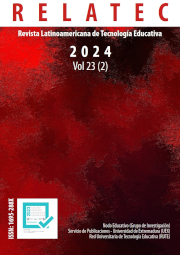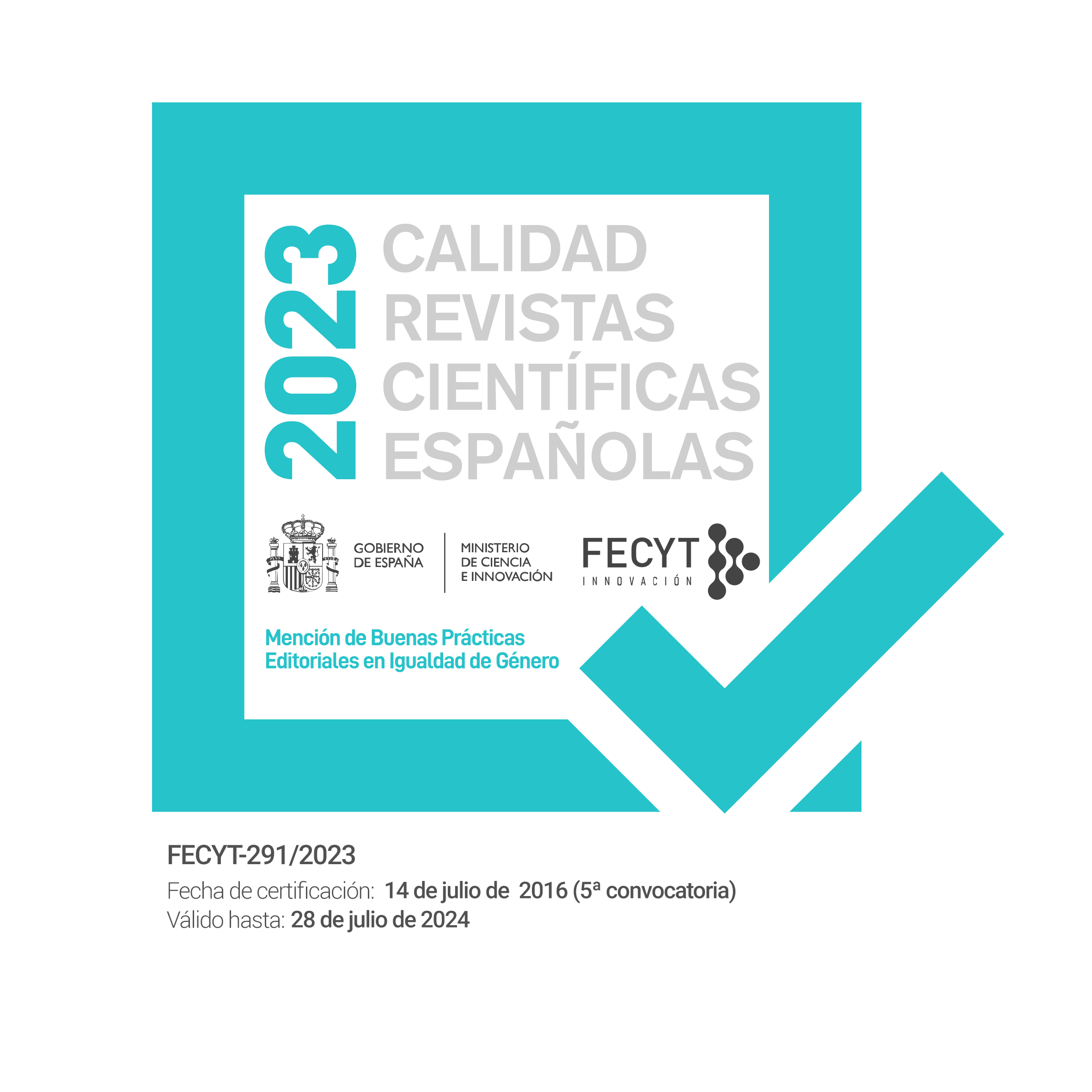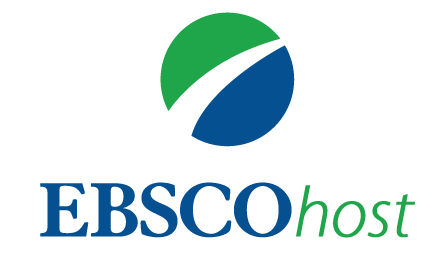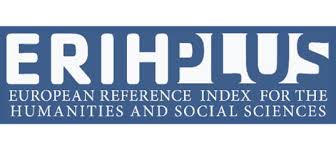DEIFDC framework: Evaluation of Digital Education deployment in Peru in the midst of the Covid-19 pandemic
DOI:
https://doi.org/10.17398/1695-288X.23.2.89Keywords:
digital education, developing countries, digital economy, social impactAbstract
Digital Education is a key factor to bring developing countries up to speed so they are able to compete under the new rules of the Digital Economy. The Covid-19 pandemic crisis has made more evident the need to implement a global educational strategy where all children can be prepared to learn in a digital environment independently of their country and birth condition. In this research, a Digital Education Index for Developing Countries (DEIFDC) has been defined and applied for the Peruvian case. The construction of the index is based on relevant variables organized in three levers to determine Peru’s capacity to better prepare current primary school children to acquire the competences needed in a 21st century workforce. The results show good development on pedagogical capabilities and students’ readiness but only adequate maturity on the development of schools’ infrastructure. Peru’s slow digital development, in comparison to other countries in the region, is distressing the availability of high-skilled labour, digital GDP growth and digital services productivity hence major efforts will need to be undertaken to guarantee Peruvians upgrade to a digital prepared society.
References
Balarín, M. (2013). Las políticas TIC en los sistemas educativos de América Latina. Caso Perú. Unicef. Buenos Aires, Argentina.
Beblavý, M., Baiocco, S., Kilhoffer, Z. Akgüç, M., Jacquot, M. (2019). Index of Readiness for Digital Lifelong Learning. Centre for European Policy Studies with Google. Brussels, Belgium.
BBVA (2020). Digitalización: ¿Qué se ha hecho en Perú y cuáles son los retos a futuro?. BBVA Research. Madrid, Spain.
BBVA (2017). Peru: Advances in digitisation. BBVA Research. Madrid, Spain.
Brynjolfsson, E., Collis A. (2019). How should we measure the Digital Economy?. Harvard Business Review. Boston MA, United States of America.
Cardim, J., Molina-Millán, T., & Vicente, P. C. (2021). Can technology improve the classroom experience in primary education? An African experiment on a worldwide program (No. wp2101). Universidade Nova de Lisboa, Faculdade de Economia, NOVAFRICA.
Cuenca, R. (2020). Educared, 2021: expectativas e incertidumbres. Fundación Telefónica. Li-ma, Perú.
Cristiá, J. P., Ibarraran, P., Cueto, S., Santiago, A., Severin, E. (2012). Technology and child de-velopment: Evidence from the One Laptop per Child program. Inter- American Develop-ment Bank IDB working paper series No. IDB-WP-304.
Department of Economic and Social Affairs (2017). Indigenous Peoples and the 2030 Agenda. United Nations. New York, United States of America.
Dingel, J. I., Neiman, B. (2020). NBER (National Bureau of Economic Research) Working Paper 26948. Cambridge MA, United States of America.
Figueroa, A. (2008). Education, Labour Markets and Inequality in Peru, CRISE (Centre for Re-search on Inequality, Human Security and Ethnicity) Working Paper No. 48, Department of International Development, University of Oxford. Oxford, UK.
Foley, P., Sutton, D., Wiseman, I., Green, L., Moore, J. (2018). International Digital Economy and Society Index, Tech4i2 for the European Commission. Brussels, Belgium.
Freitas, S., Liarokapis F. (2011). Serious Games: A New Paradigm for Education? Serious Games and Edutainment Applications. ISBN 978-1-4471-2160-2 pp 9-23.
Fundación Santillana (2020). Perú: perspectivas y desafíos para la escuela que viene en 8 cla-ves.
Ganimian, A.J., Vegas, E. and Hess, F. M. (2020). Realising the promise: How can education technology improve learning for all? Brookings Institution. Washington, DC. United States of America.
Gianini, S., Bogdan-Martin, D. (2020). UNESCO’s Mobile Learning Week 2020, Beyond Dis-ruption: Technology Enabled Learning Future. Opening Ceremony. Paris, France.
Heckman, J.J. (2007). The economics, technology and neuroscience of human capability for-mation, NBRE (National Bureau of Economic Research) Working Paper 13195. Cambridge MA, United States of America.
Instituto Nacional de Estadística e Informática (2019). Población que accede a Internet. Lima, Perú.
International Telecommunication Union (ITU), (2013). Technology, broadband and education: advancing the education for all agenda. Paris, France.
Internet Society, (2017). Internet Access and Education: Key considerations for policymak-ers. Reston VA, United States of America.
Kalolo, J.F. (2018). Digital revolution and its impact on education systems in developing countries. Educ Inf Technol 24, 345–358.
Kask, M., Feller, N. (2021). “Digital Education in Europe and the EU’s role in upgrading it. Pol-icy Brief. Hertie School. Jacques Delors Centre. Berlin, Germany.
Lieberman, J. I. (2004). Offshore outsourcing and America’s competitive edge: losing out in the high technology and R&D services sectors. Washington DC, United States of America.
Light, D. (2015). Technology, Teaching and Learning. Center for Children and Technology, Ed-ucation Development Center. New York, United States of America.
Linares, J. (2016). Papert el primer ciudadano de la Era Digital dice adiós. Article published in El Peruano. Lima, Perú.
López-Calva, L. F. (2020). Working in times of pandemic: only one in five workers in LAC can actually work from home. UNDP Latin America and the Caribbean. New York, NY. United States of America.
Lopez, O.S. (2010). The Digital Learning Classroom: Improving English Language Learners’ academic success in mathematics and reading using interactive whiteboard technology. Computers & Education, 54(4), 901-915.
Luckin, R., Bligh B., Manches, A, Ainsworth S., Crook C. (2012). Decoding learning: The proof, promise and potential of digital education. Nesta. London, United Kingdom.
Luckin, R., Holmes, W., Griffiths, M., Forcier, L. B. (2016). Intelligence Unleashed: An argu-ment for AI in Education. Pearson Education. London, United Kingdom.
Marcone Flores, S., Castro M., Kanashiro A., Núñez X.M., León, M.G. (2010). Perspectivas de desarrollo de las TIC en el Perú, con especial incidencia en la educación. Ed. Santillana y Consejo Nacional de Educación. Lima, Perú.
Marcone, S. (2004). Proyecto Huascarán: educación pública, tecnología y política. Tecnología y Sociedad. Revista Latinoamericana (ITDG). Nuevas tecnologías: ¿Qué nos espera a los países en desarrollo?. Lima, Perú.
Ministerio de Educación del Estado Plurinacional de Bolivia (2016). Uso de herramientas de autor a través de la pizarra digital interactiva en la concreción curricular. Educa Innova 2016. La Paz, Bolivia.
Ministerio de Educación de la República del Perú (2003). Ley General de Educación, 28044. Lima, Perú.
Ministerio de Educación de la República del Perú (2013). Documento Nacional de las Lenguas originarias del Perú. Lima, Perú.
Ministerio de Educación de la República del Perú (2016). Currículo Nacional de la Educación Básica. Lima, Perú.
Ministerio de Educación de la República del Perú (2020). Resolución Ministerial N° 160-2020-MINEDU. Lima, Perú.
Ministerio de Educación de la República del Perú (2020). Minedu inicia en Cajamarca la dis-tribución de más de un millón de tablets. Lima, Perú.
Ministerio de Educación de la República del Perú (2021). PISA. Oficina de Medición de la Cali-dad. Lima, Perú.
Ministerio de Economía y Finanzas de la República del Perú (2020). Marco Macroeconómico Multianual 2021-2024. Lima, Perú.
Ministerio de Educación de la República del Perú (2020). En octubre se iniciará distribución de tablets a estudiantes y docentes. Lima, Perú.
Panagiotis, K., Punie Y., Devine, Y. (2015). Promoting Effective Digital-Age Learning: A Euro-pean Framework for Digitally-Competent
Educational Organisations”. Brussels, Belgium.
Papert, S. (1993). The children’s machine: Rethinking school in the age of the computer. New York, United States of America.
Petrie, C., García-Millán, C., Mateo-Berganza, M. M. (2021). 21st Century Skills in Latin America and the Caribbean. Inter-American Development Bank. Washington DC, United States of America.
Spotlight: 21st Century Skills in Latin America and the Caribbean HundrED Research. https://hundred.org/en/research
Psacharopoulos, G., Patrinos, H. A. (2018). Returns to Investment in Education: A Decennial Review of the Global Literature. Policy Research Working Paper; No. 8402. World Bank, Washington DC, USA.
Rivielllo, R. (2020). La competencia digital y su desarrollo frente a la nueva realidad. enlightED Conference. Madrid, Spain.
Rivoir, A. (2016). Revisión comparativa de iniciativas nacionales de aprendizaje móvil en América Latina: El caso de la Política TIC en Perú. UNESCO. Buenos Aires, Argentina.
Robin B. R. (2016). The Power of Digital Storytelling to Support Teaching and Learning. Digi-tal Education Review, (30), 17-29.
Ruhl, J. (2015). Teaching Methods for Inspiring the Students of the Future. TEDxLafayette. Video. TEDx Talks, May, 27.
Salas-Pilco, S. Z., Cheung, L., Fang, L., Jiang, L. (2014). ICT in Peruvian education: An overview of its development. Research Studies in Education (Vol. 12, pp. 92-101). Hong Kong, China.
Santiago, A., Severin, E., Cristia, J., Ibarrarán, P., Thompson, J., & Cueto, S. (2010). Experi-mental assessment of the program “One Laptop per Child” in Peru. Inter-American Devel-opment Bank Education. New York, USA.
Scheuer, O., Loll, F., Pinkwart N., McLaren, B.M. (2010). Computer-supported argumentation: A review of the state of the art. International Journal of Computer-Supported Collaborative Learning.
Sethi, A., Suman, V. (2020). Digital resonance: the new factor influencing location attractive-ness. The 2019 Kearney Global Services Location Index. A.T. Kearny. New York, United States of America.
Semáforo Escuela (2020). Resultados 2020. Ministerio de Educación de Perú. Lima, Perú.
Solar Energy International (2018). Developing World Programs. Paonia CO, USA.
Trucano, M. (2010). Worst practice in ICT use in education. World Bank Blogs.
UNESCO (2015). Rethinking Education. Towards a global common good?. Paris, France.
UNESCO (2019). Recommendation on Open Educational Resources (OER). Paris, France.
UNESCO (2020). La Unesco en Perú ante la emergencia del Covid-19. Una respuesta estratégi-ca. Lima, Perú.
UNESCO (2020). World Inequality Database on Education. Paris, France.
UNESCO, Global Education Monitoring Report (2020). COVID-19 is a serious threat to aid to education recovery. Policy Paper, 41. Paris, France.
Unicef and International Telecommunication Union (2020). How many children and young people have internet access at home?
Estimating digital connectivity during the COVID-19 pandemic. New York, United States of America.
United Nations (1948). The Universal Declaration of Human Rights. United Nations General Assembly. Paris, France.
United Nations General Assembly (2015). Transforming our world: the 2030 Agenda for Sus-tainable Development. A/RES/70/1. New York, United States of America.
United Nations Development Program (2019). Informe sobre Desarrollo Humano 2019. Más allá del ingreso, más allá de los promedios, más allá del presente. Desigualdades del desarro-llo humano en el siglo XXI. New York, USA.
Wilson-Body, P. (2020). Unlocking skills for the future.
World Bank (2016). World Development Report 2016: Digital Dividends. Washington DC, USA.
World Bank Group (2017). Peru - Systematic Country Diagnostic. Washington, DC, USA.
World Bank (2019). Ending Learning Poverty: What Will It Take?. Washington DC, USA. https://openknowledge.worldbank.org/handle/10986/32553
World Bank, (2020). Education Context. Washington DC, USA.
World Economic Forum (2020), Jobs of Tomorrow: Mapping Opportunity in the New Economy. Geneva, Switzerland.
Yinghui, S., Zongkai Y., Harrison H. Y., Sanya L., (2012). The impact of interactive white-boards in on education. Wuhan, China. New York, USA.
Downloads
Published
Issue
Section
License
Copyright (c) 2024 Ana Victoria Delgado-Martín, José Marí Larrú-Ramos

This work is licensed under a Creative Commons Attribution-NonCommercial-NoDerivatives 4.0 International License.
Authors who publish in this journal accept the following conditions:
1. The Author retains copyright in the article. Upon acceptance of the article, the author shall grant to the Publisher the right of first publication of the article. with the dcoument registered with the Creative Commons Attribution-NonCommercial-NoDerivative 4.0 International (CC BY-NC-ND) license, which allows to third parties to use what is published whenever they mention the authorship of the work and the first publication in this journal.
2. Authors can make other independent and additional contractual agreements for the non-exclusive distribution of the article published in this journal (eg, include it in an institutional repository or publish it in a book) provided they clearly indicate that the work was published for the first time in this journal.
3. Authors are allowed and recommended to publish their work on the Internet (for example on institutional or personal pages) before and during the review and publication process, as it can lead to productive exchanges and a greater and faster diffusion of published work (see The Effect of Open Access).









